How to buy a drone for kids how to buy a car how to buy a business how to buy a domain name how to change yahoo to google how to get free robux how to pronounce

How to buy a drone
For me, it all started with the Hubsan X4 H107C, a palm-size quadcopter with a low-res camera that can be picked up for less than $40 (or about AU$100 or £45). It has a paltry 5 to 7 minutes of flight time and I crashed it loads, but I was hooked and wanted to fly as much as possible.
This is why quadcopters, multirotors, unmanned aerial systems (UAS), unmanned aerial vehicles (UAV), drones or whatever you want to call them, have become so popular: Unlike radio-controlled planes and helicopters, the entry cost can be very low, the learning curve shallow and, depending on the size, they can be flown in your backyard or living room.
In the course of buying and maintaining my own and testing and reviewing drones for CNET, however, there are some things I've learned that you should consider before entering the hobby -- even if your plan is to just start with a toy drone like I did. But, before I get into all that, here are my go-to recommendations for consumer drones at the moment.
Best toy drones

Along with the Hubsan X4, I'm a fan of the Syma X5C because it's inexpensive at around $40 (or about AU$50 or £35). You can easily find parts and extra batteries for it, and its size -- while still small and light -- makes it easier to keep track of outdoors than smaller models. It even has a camera on it, albeit a pretty crummy one.
For flying indoors, I recommend Parrot's Minidrones like the Mambo, if you just want something stable you can fly with your phone for a few minutes. They're available in several different styles and start at about $100 (or about AU$150 or £100), though older models can be found for considerably less. They're great for younger pilots, too, because they have sensors to help them hover in place unassisted -- very handy when navigating around the house.
There is also a new breed of mini and nano quads that are a lot easier to fly, thanks to the addition of air pressure sensors. Look for models such as the Aerix Vidius HD that offer an altitude assistance or hold feature, which keeps you from having to constantly adjust the throttle so you can concentrate on directional controls.
Best camera drones
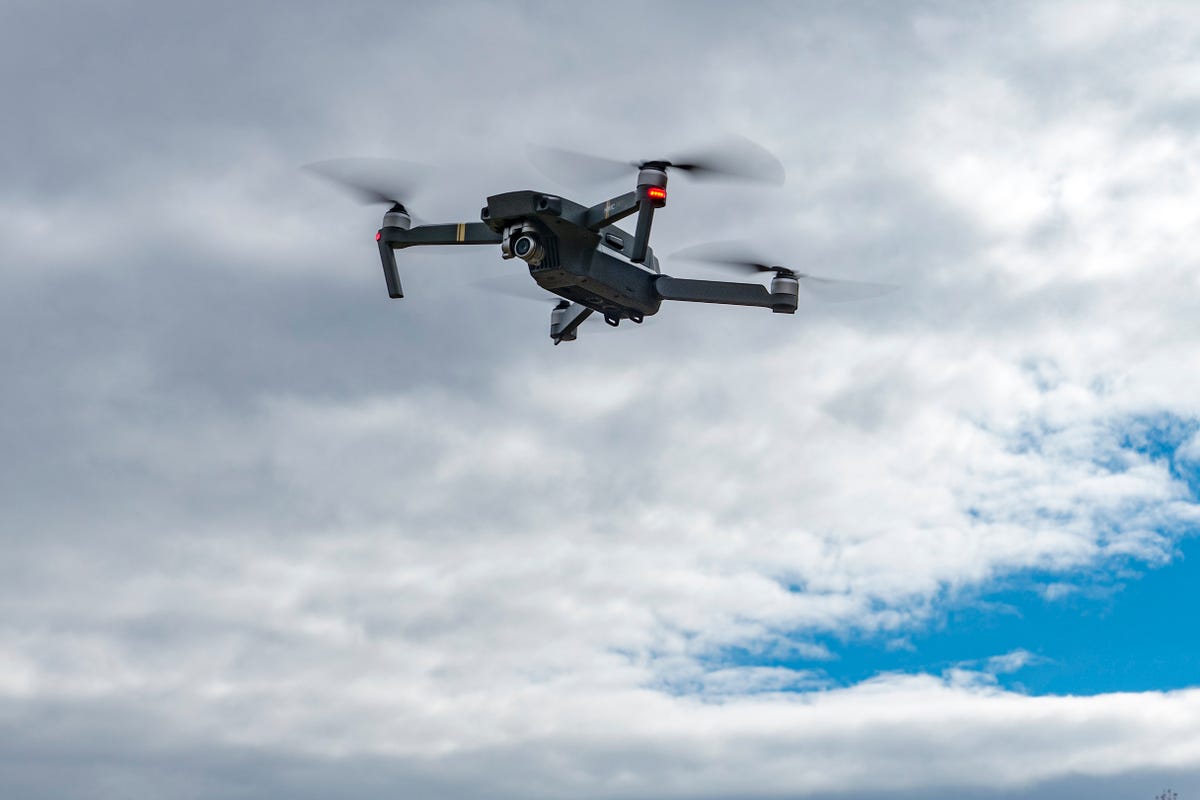
DJI is the leader in flying cameras, whether you're looking for something to get started in aerial photos and video or want an out-of-the-box solution for TV and film. Of course, the more money you spend, the better the features get. If you're looking for great performance and features with a design so small you can fit it in your backpack with room to spare, go with the DJI Mavic Air.
If you don't like the sound of dropping a lot of money on a camera that's permanently attached to a drone, check out GoPro's Karma drone. The camera-maker is exiting the drone market, but it's going to sell through its Karma inventory and continue to support its one and only quadcopter. The Karma uses one of the company's tiny action cams, so when you're not flying you can use the camera for whatever else you want to capture on land or in the water. But, more importantly, the motorized gimbal that stabilizes the camera in the air can be removed and attached to an included handgrip, giving you the option to shoot stabilized video and photos on the ground.
Best selfie drones

Yuneec Breeze 4K
Joshua Goldman/CNETSmall like a toy drone, but with the smarts of higher-end camera drones, selfie drones are basically the point-and-shoot cameras of the sky. Selfie drones are small enough they're unobtrusive in public places: You fly them with your phone instead of a big controller, and simple onscreen controls and automated shooting modes let you capture dramatic shots with little more than some taps and swipes.
DJI's Spark is the most versatile in the category and is loaded with advanced tech to make flying simple and safe. However, if you want to save some money, consider either the Yuneec Breeze 4K and Hover Camera Passport. The Breeze, pictured above, has special shot modes that will make you look like a pro pilot. With just a few taps in its mobile app, you can program it to perform special camera moves like 360-degree orbits or direct it to fly up high and reveal the scene around you. And if you don't want to control it with your phone, Yuneec has a small video-game-style controller and a first-person-view headset available.
The Passport's unique folding design makes it not only superportable, but safe, too, with propellers that are completely protected by its frame. After launching just tap twice on your phone screen to make the drone follow your face. Once you get your shot, the drone folds down to the size of a hardcover book.
Best racing drones
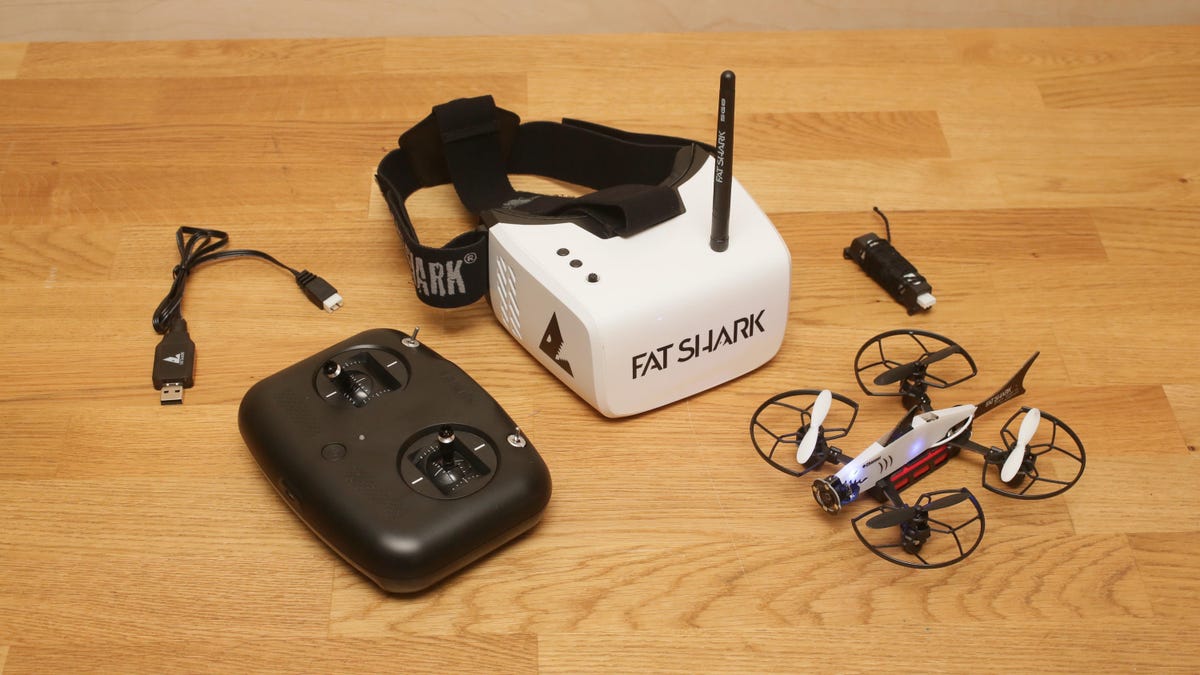
Fat Shark 101
Sarah Tew/CNETUnless you're really a tinkerer and know your way around a soldering iron, I recommend first-time buyers stick to ready-to-fly (RTF) models. The thing is, when it comes to racing drones, most people in the hobby build their own. That's not to say RTF racing quads don't exist, but they aren't as abundant as drones for photography or just having a few minutes of fun.
If you think you might be interested in racing and want a cheaper entry point, check out the Fat Shark 101. The kit comes with everything you need to get started -- a quad, a simplified controller and an FPV (first person view) headset -- and doesn't require a ham radio license from the FCC. They even throw in a couple of gates to practice flying through and access to a flight sim. The best part is, you can upgrade, so the goggles will work with other drones, as will the controller.
If you want to jump right in and get a larger racer, consider the UVify Draco. It's ready to fly and you can buy it direct from UVify with a controller and FPV goggles if you don't want to worry about picking those out on your own separately. The drone is built tough, but the design is modular, so if you snap a motor arm, you can just pop a new one on and get back in the air. (The company also has a new micro racing quad called the Oori that it says is the fastest RTF drone for its size.)
You can also check out sites like Team Blacksheep and GetFPV.com that sell complete kits to assemble yourself as well as RTF options. The latter will also has a great section for beginners with part explainers. Sites like Banggood, HeliDirect and Horizon Hobby are also excellent for finding parts and batteries, too.
The seven things to consider before you buy
Cheaper drones aren't necessarily for beginners
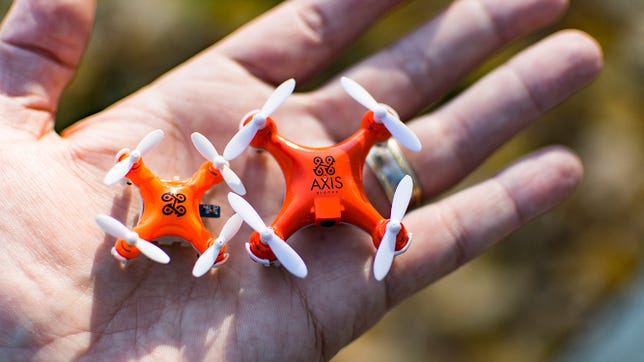
Tiny inexpensive quads like these can be a pain for first-timers.
Joshua Goldman/CNETLike many things in life, you get what you pay for with drones: The more money you spend, the more features you get that make flying easier. For example, while the Hubsan X4 quad I mentioned at the top isn't a bad place to start, it lacks sensors found on higher-end drones to help it hover in place on its own or return to you if you get in a jam.
If you're just starting out, GPS is invaluable and worth paying more for if you're looking for stable flying out of the box, especially for photos and video. GPS is something you won't typically find on toy-grade drones, and although they're good to practice with, new pilots might find toy drones to be incredibly frustrating.
Flight times are still relatively short
Battery life is still the suck when it comes to drones. Several camera drones claim a battery life at or around 30 minutes. When a manufacturer gives you a flight time, that is typically reached under ideal testing conditions in a controlled environment. The faster you fly, the more weight you add, the stronger the winds you're flying in, the quicker the drone will sap its battery. Plus, there's the time it takes to get up in the air and land that's not accounted for in that time.
My general rule of thumb is to take whatever the manufacturer claims and subtract 5 to 10 minutes for midsize drones. Toy drones typically get between 5 and 7 minutes of good flying, though some can hit the 10- to 12-minute range.
The price of the drone is only the beginning
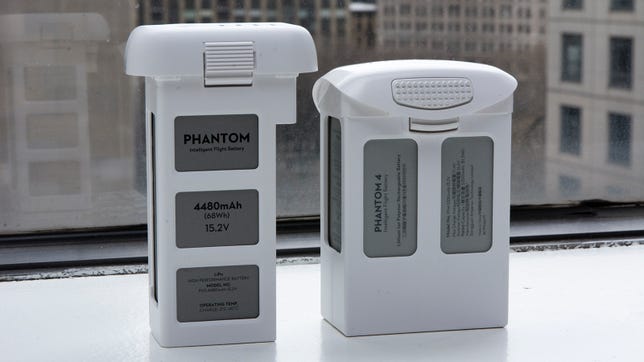
Depending on the aircraft, batteries can run you from about $5 apiece for toys to more than $100 each for camera drones.
Joshua Goldman/CNETSo you just dropped $1,000 on a new drone. Guess what? You're not done spending. At the very least, you'll want to buy a couple extra batteries, some spare propellers, maybe some prop guards and perhaps a quick charger, so you're not waiting hours to fly again. You're more than likely going to crash, which could lead to repair costs -- either for replacement parts or shipping it back to the manufacturer for them to repair. (This is exactly why DJI offers crash insurance for new drones.)
When you're shopping for your drone, see how easy it is to find replacement parts, batteries and other accessories and take note of the prices. Also, be cautious when buying third-party parts, especially batteries and chargers, which might not be the same quality as those made by the drone manufacturer.
Everyone will assume you're invading their privacy
When you're out flying in a public space, or even in your own backyard, anyone who sees you doing it will think you're spying on them or someone else. You could be standing in the middle of a 20-acre field with no one in sight and your drone no more than 50 feet directly overhead and you might end up answering questions about being a peeping Tom. I say this because it's happened to me. Repeatedly.
And along those same lines....
Everyone but you thinks they're dangerous
It doesn't matter if you're the safest pilot around or that you could do more damage hitting someone with a baseball than with some of the drones I've flown, but that won't stop onlookers from feeling a threat to their safety. And, frankly, that's completely fair.
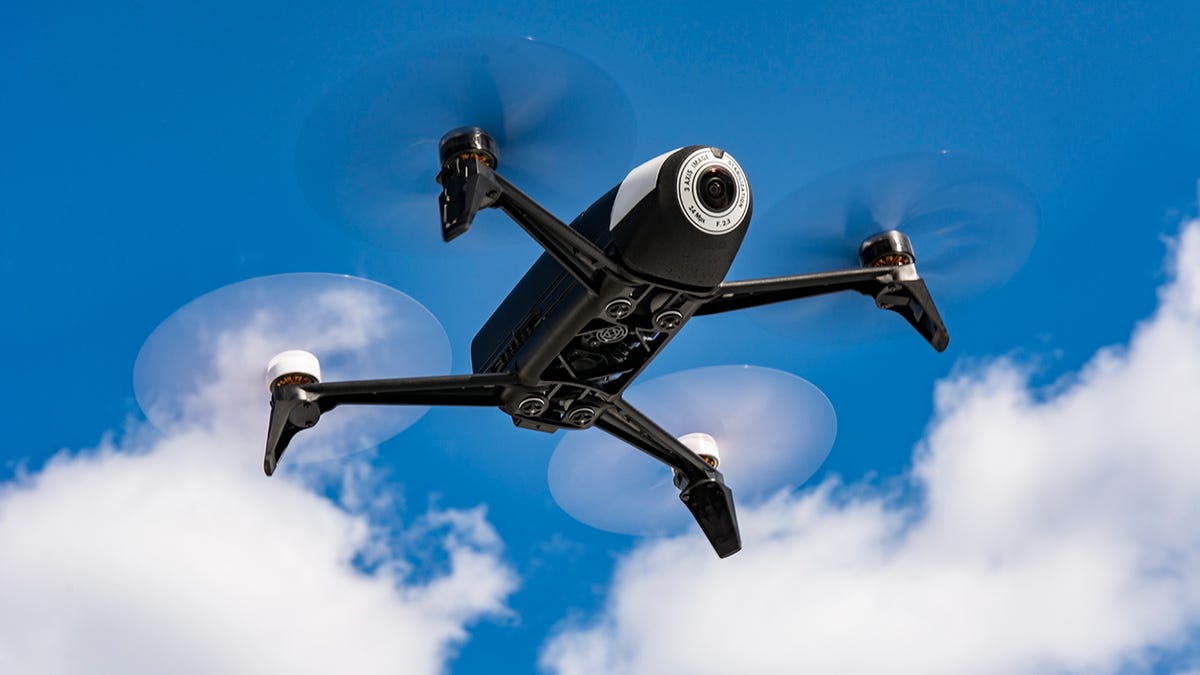
Parrot's Bebop 2 is one of the safer drones available, with props that stop instantly if they hit anything.
Joshua Goldman/CNETNothing about plastic blades spinning at high speeds screams "safety." Then you add in the potential for unpredictable movements or system failures, whether from 400 feet or at eye level, and you've got something pretty scary for those living by what the media feeds them.
To help calm some fears, US-based pilots may want to get an Academy of Model Aeronautics membership. Along with a whole host of benefits including access to AMA-member flying sites, a membership gives you $2,500,000 comprehensive general liability insurance as well as $25,000 accident/medical coverage, $10,000 maximum accidental death coverage and $1,000 fire, theft and vandalism coverage for members. You can also get on-the-spot insurance from Verifly. Download the company's iOS or Android app and it will quote you an hourly price for up to $2.5 million in liability coverage.
Finding places to fly can be difficult
I live in New Jersey and work in New York, and it's becoming increasingly difficult to find places to safely -- and legally -- fly. US national parks are off-limits, and in New Jersey so are all state parks. The county and municipal parks around me all have different regulations regarding RC aircraft. And then there are the no-fly zones, which makes much of New York out of bounds as well as just dangerous, because of buildings, people and cars.
Before you buy a drone -- even a toy one if you plan to fly outside -- you'll want to visit AirMap or Mapbox to check no-fly zones for places you intend to fly. In the US, you can also download the FAA's B4UFly app to check your planned location. These don't cover state or local ordinances, though, so you'll still need to check them to see if you're OK to fly.
Basically, any RC aircraft except toys need an FAA registration
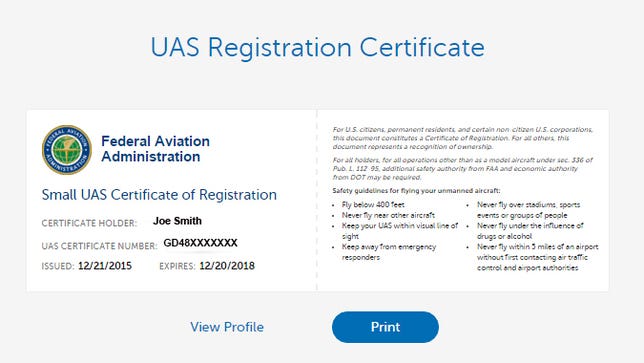
The US Federal Aviation Administration (FAA) is requiring anyone who wants to fly an unmanned aerial system (UAS) that weighs between 0.55-pound (250 grams) and 55 pounds (approximately 25 kilograms) for recreation or hobby to register with the agency. Civil penalties for not registering may include fines up to $27,500. Criminal penalties may include fines up to $250,000 and/or imprisonment for up to three years.
Most sub-$100 UASs fall under this weight. For example, all of these toy drones weigh in under that half-pound mark. A kitchen or postal scale can be used to weigh your drone or you can check with the manufacturer. Also, this applies to both store-bought and homemade aircraft.
The registration cost is $5 and it can all be done online in a matter of minutes. You don't have to register each aircraft you own, just yourself, and you'll be given a number to attach to what you're flying. That's it. Essentially, it's the FAA's way of getting you to agree that you've read its safety guidelines including staying more than 5 miles away from airports and below 400 feet.
There's no equivalent registration requirement in the UK or Australia as long as you're not using your drone for commercial purposes, although that may soon change.
Know your RTF from your FPV
Like any hobby or technology, there's a whole lot of lingo and abbreviations that come with the territory. Here are some of the ones you'll come across the most.
- Ready-to-fly (RTF): A drone that requires little to no assembly and is ready to fly out of the box.
- Almost-ready-to-fly (ARTF or ARF): These drones may require some minor assembly and additional equipment such as a receiver (Rx) and radio transmitter (Tx) aka a radio controller.
- Bind-n-fly (BNF): BNF models are essentially RTF drones with a receiver, but not a radio controller (you must buy one separately). But you can then use that controller to pilot other BNF aircraft, saving you some money if you decide to grow your RC aircraft collection.
- First-person view (FPV): The video feed direct from a camera on the drone. It can be used for framing your photos or videos as well as piloting. With drone racing, pilots usually wear FPV goggles for an immersive experience.
- Return-to-home (RTH): A safety feature that allows the drone to autonomously fly back to the pilot's location or starting point.
- Gimbal: A mechanical camera stabilization system that lets you get smooth video and sharp photos even with fast movements or in high winds.
- Headless mode: Intended for beginner pilots, using this mode means the drone will always travel forward, backward, left or right when moving your remote's stick in those directions, regardless of which way the front of the drone is pointed.
- Follow me: A feature that allows a drone to automatically follow a subject, typically using a GPS signal from a mobile device, remote control or a beacon attached to the subject being tracked.
- Brushless motor: Though more expensive than their brushed counterparts, brushless motors are more efficient, last longer and are quieter.
Source


